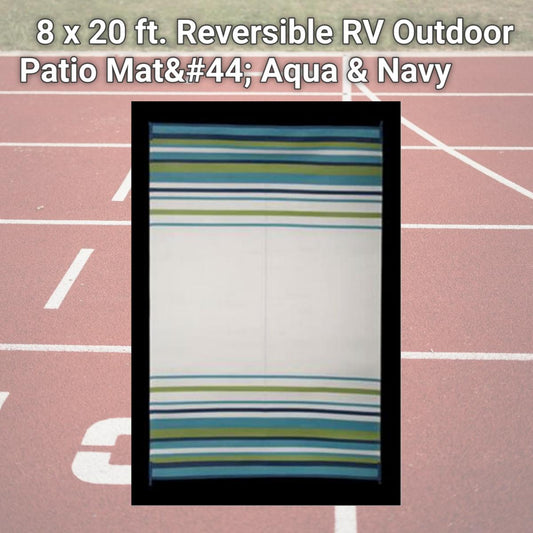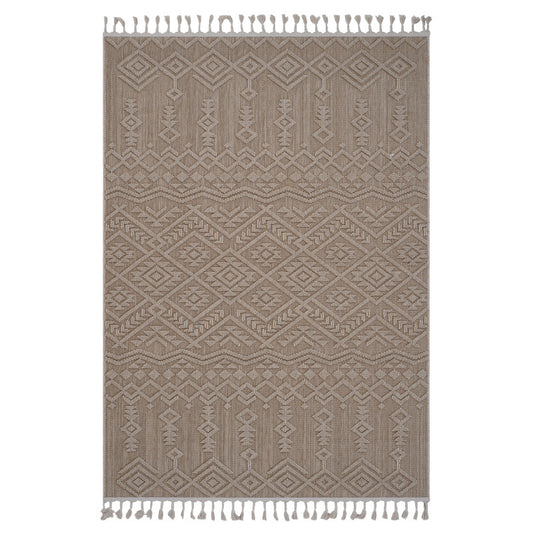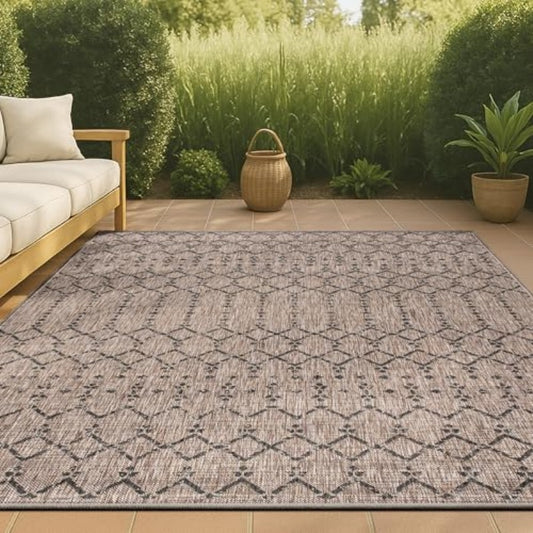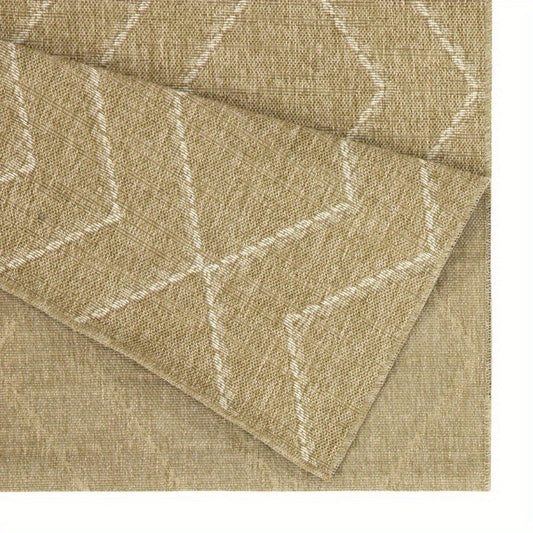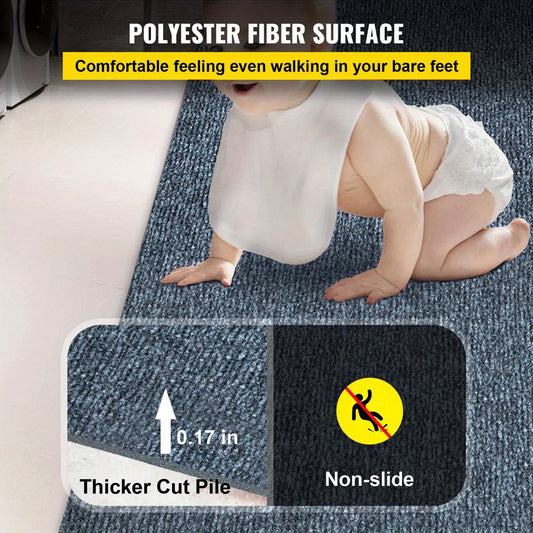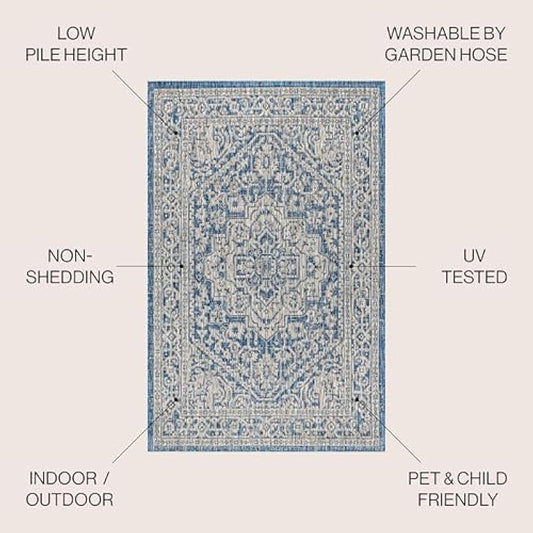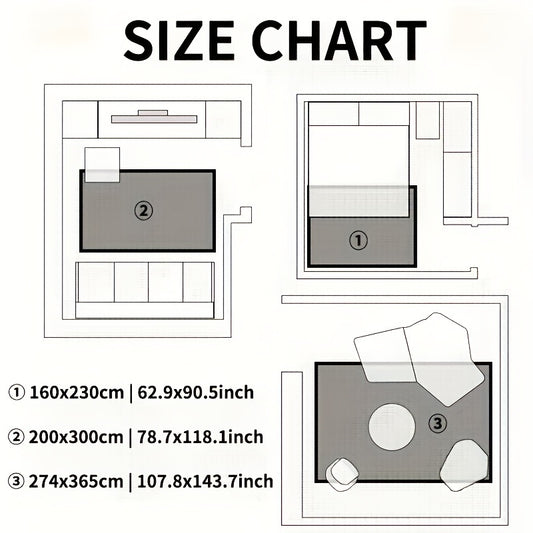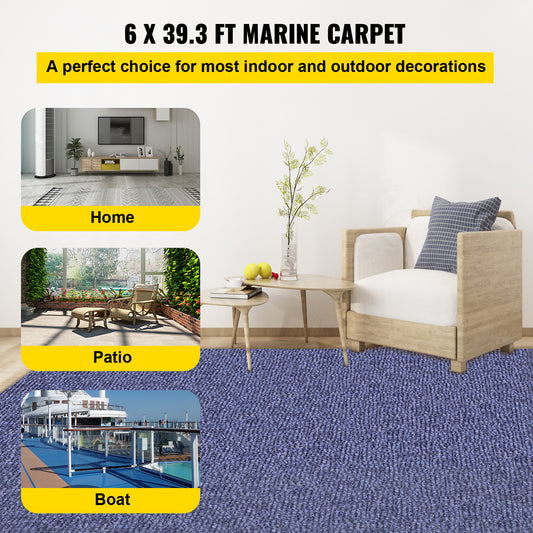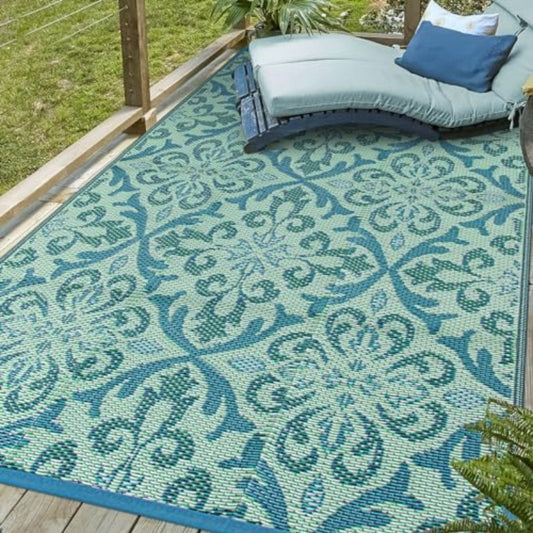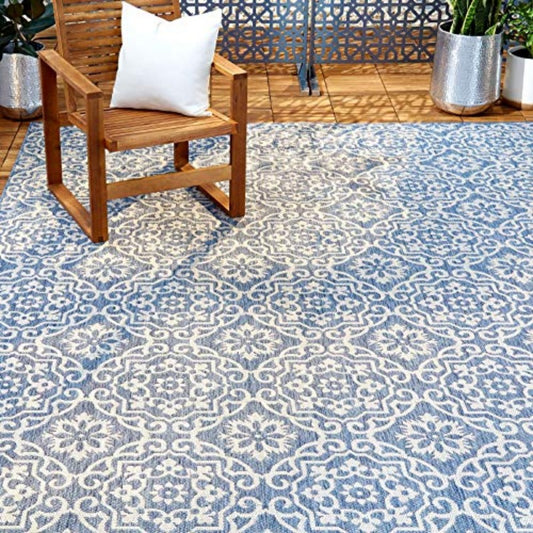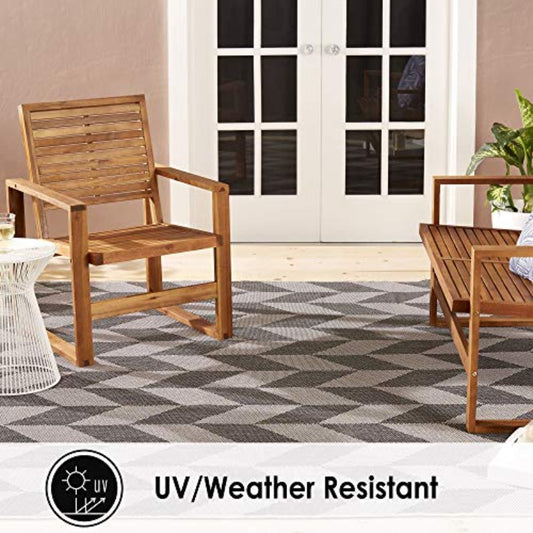The Timeless World Of Luxury Rugs
Introduction To The Legacy Of Rugs
Rugs have long stood as one of humanity’s most functional and expressive art forms. Across civilizations, from the grand halls of Persian palaces to the cozy hearths of European cottages, rugs have shaped interiors, defined spaces, and reflected cultural identities. More than mere coverings for floors, they embody history, craftsmanship, and prestige. Today, luxury rugs continue to serve as essential anchors of design, uniting tradition with modern innovation. Fabulive has elevated this heritage by curating collections that embody timeless artistry while catering to contemporary lifestyles.
The Art Of Rug Design
Design is the soul of every rug. It is the visual narrative that distinguishes one from another, weaving stories in threads of color, motif, and geometry. At its highest level, rug design represents not just decoration, but communication—a silent dialogue between artisan and observer. Whether inspired by intricate medallions, minimalistic modern grids, or nature’s organic patterns, each rug becomes an artwork beneath the feet. In luxury interiors, rugs form the foundation upon which other design elements find harmony. By choosing the right piece, one defines not only a room’s character but also its rhythm and atmosphere.
Traditional Versus Contemporary Designs
The world of rug design spans centuries and cultures. Traditional rugs often carry symbolic motifs, floral arabesques, or geometric borders, while modern rugs experiment with abstraction, tonal gradients, and minimalist patterns. What unites both approaches is the balance between aesthetic appeal and functionality. Fabulive’s collections embrace this duality, offering heritage-inspired pieces alongside sleek, modern expressions. A hand-knotted Persian-inspired carpet may bring gravitas to a formal drawing room, while a contemporary round rug with abstract lines may refresh a loft’s interior. Both are timeless when curated thoughtfully.
Materials That Define Luxury Rugs
The essence of a rug lies in its materials. Premium wool, revered for its resilience and warmth, remains the benchmark of traditional luxury. Silk, with its luminous sheen, elevates rugs into works of shimmering elegance, often reserved for statement spaces. Modern materials such as viscose, bamboo silk, or sustainable fibers introduce fresh tactile experiences, offering subtle luster and eco-conscious appeal. In performance rugs, blends of natural and synthetic yarns ensure durability without compromising sophistication. Selecting the right material determines not only the rug’s appearance but also its longevity and suitability for varied lifestyles.
Craftsmanship: The Foundation Of Excellence
A rug’s value is inseparable from its craftsmanship. Hand-knotted rugs, often requiring months or even years of meticulous labor, remain the pinnacle of artisanal skill. Every knot, tied with precision, creates a dense and enduring fabric that can last generations. Flatweaves, such as kilims and dhurries, embody lightweight versatility while preserving artistic charm. Machine-made options, while more accessible, strive to replicate these details with efficiency. Yet it is the hand-finished touches—fringes, bindings, careful dyeing—that distinguish truly luxurious pieces. Fabulive places emphasis on curating rugs where craftsmanship complements modern design sensibilities.
The Role Of Color In Rug Design
Color is the emotional essence of a rug. It can energize, calm, or balance an entire room. Deep reds and blues have historically symbolized richness and tradition, while neutral palettes of ivory, beige, and gray dominate modern luxury interiors for their versatility. Bold tones, such as emerald greens or midnight blacks, add drama when used sparingly. Subtle gradients and tonal shading create depth, while metallic accents in threads of gold or silver elevate glamour. Choosing a rug is therefore as much about understanding color psychology as it is about design preference.
Rugs As Functional Luxury
While the artistry of rugs often takes center stage, their functional value remains essential. They insulate spaces, soften acoustics, and provide comfort underfoot. Strategically placed, a rug can define seating areas in open layouts, anchor dining tables, or add intimacy to expansive rooms. For families, rugs provide safe, cushioned spaces for gathering. In luxury settings, they serve as markers of sophistication while still addressing everyday needs. The right rug must balance beauty with performance, ensuring it withstands traffic, enhances comfort, and complements the architectural framework.
Cultural Relevance Across Generations
Rugs carry cultural narratives across centuries. They have served as dowries, heirlooms, and symbols of prosperity in various societies. Patterns once developed to signify tribal identity now find place in global luxury markets, blending ancient meaning with modern relevance. Owning a rug becomes a bridge to heritage—an opportunity to preserve traditions while curating personal style. In today’s cosmopolitan homes, rugs serve as cultural ambassadors, introducing design stories from faraway lands into intimate living spaces. Fabulive’s rug collection embraces this universality, ensuring cultural depth meets modern sensibility.
Styling Rugs In Modern Interiors
Styling a rug requires thoughtful placement. In living rooms, rugs should extend beyond seating arrangements, grounding sofas and chairs to form a cohesive zone. In dining areas, they should accommodate the table and chairs fully, ensuring balance when chairs are moved. Bedrooms benefit from oversized rugs extending beneath beds, offering warmth when stepping down each morning. Smaller rugs may function as accents in entryways, hallways, or reading corners. Layering rugs—placing a smaller artistic piece over a neutral base—introduces depth and texture, a technique often seen in luxury editorials.
The Emotional Dimension Of Rugs
Beyond practicality, rugs evoke emotional resonance. They can make vast spaces intimate, cold floors warm, and echoing rooms serene. They mark milestones—weddings, new homes, family inheritances—embedding memory into fiber. For many, rugs are not simply decor but heritage, connecting generations through texture and design. Choosing a rug is therefore both an aesthetic decision and a deeply personal act. It reflects one’s appreciation for artistry, heritage, and comfort.
Fabulive’s Curated Approach To Rugs
Fabulive distinguishes itself by bridging heritage craftsmanship with contemporary taste. Each curated rug is selected not only for its beauty but also for its adaptability to diverse interiors. From performance-driven designs for modern living to artisanal hand-knots that honor centuries-old techniques, Fabulive ensures clients find pieces aligned with their lifestyles. The brand’s ethos lies in blending tradition, innovation, and sustainability, offering rugs that speak to connoisseurs and homeowners alike. By balancing aesthetics with practicality, Fabulive positions rugs as enduring investments in luxury living.
Conclusion To Part-1
Rugs are not mere accessories—they are the canvas upon which interiors unfold. Their design, material, and craftsmanship shape the experience of living spaces, offering both visual and tactile pleasure. As timeless artifacts, they carry cultural resonance while addressing contemporary needs. Fabulive’s rug collection reflects this legacy, curating pieces that embody artistry, durability, and modern luxury. Part-2 will explore in greater detail the materials, weaving techniques, and the evolving role of rugs in today’s design landscape.
The Significance Of Materials In Rug Luxury
At the heart of every luxury rug lies its material composition. The type of fiber used does not only dictate the look and feel of the rug but also its durability, resilience, and aura of prestige. For centuries, the world’s most sought-after rugs were woven from wool and silk, both natural fibers that have defined opulence and endurance. Wool, sourced from fine sheep breeds, is naturally insulating, resilient, and imbued with softness. Silk, by contrast, offers unparalleled sheen, delicacy, and detail, enabling intricate patterns to gleam under soft light. Today, the definition of luxury has expanded to include eco-conscious fibers such as bamboo silk, hemp, and recycled yarns, reflecting a more sustainable approach to design without compromising elegance.
Wool: The Foundation Of Traditional Luxury
Wool remains the benchmark against which most rugs are measured. Its unique structure provides natural elasticity, making woolen rugs exceptionally resilient to foot traffic. Beyond function, wool also excels in dye absorption, resulting in vibrant, enduring hues that retain their brilliance for decades. From richly colored tribal rugs to understated modern neutrals, wool has an innate ability to balance tradition and modernity. Its insulating quality also provides warmth in winter and a natural coolness in summer, making wool rugs practical investments across climates.
Silk: The Epitome Of Refinement
Silk rugs stand as the pinnacle of craftsmanship, artistry, and exclusivity. Historically reserved for royalty and nobility, silk rugs shimmer with an elegance unmatched by any other fiber. Their fine knots allow for complex detailing, with patterns often resembling hand-painted artwork. While their delicacy makes them less suited to high-traffic areas, they are perfect for drawing rooms, studies, and spaces where visual impact is paramount. The reflective surface of silk adds depth and dimension, changing its glow under natural and artificial light. A well-maintained silk rug becomes a centerpiece of timeless sophistication.
Blends And Modern Innovations
The modern rug industry has embraced innovation by blending fibers to enhance both durability and luxury. Wool-silk blends deliver the resilience of wool with the sheen of silk, creating rugs that are both functional and dazzling. Bamboo silk, a sustainable alternative, provides softness and luster while aligning with eco-friendly practices. Viscose, while delicate, replicates the sheen of silk at a more accessible scale. These blends reflect contemporary lifestyles where versatility, aesthetics, and sustainability must coexist. Fabulive’s collections explore these innovations, ensuring customers find rugs that adapt to evolving tastes while preserving artisanal heritage.
Weaving Techniques: The Soul Of Craftsmanship
The artistry of rug-making lies as much in weaving techniques as in material selection. A rug is not just woven—it is orchestrated, knot by knot, to bring patterns to life. Hand-knotted rugs are revered for their density, precision, and longevity, with skilled artisans tying thousands of knots per square inch. Flatweaves, such as kilims and dhurries, offer lightweight versatility with bold geometric patterns. Tufted rugs, created with modern techniques, allow intricate designs at a faster pace while retaining quality. Machine-made rugs, though efficient, lack the individuality of handwoven pieces, yet advancements have narrowed the gap with meticulous finishing.
Hand-Knotted Masterpieces
The art of hand-knotting remains central to the definition of luxury. Each knot tied into the warp and weft represents hours of skill, concentration, and heritage. The density of knots per square inch (KPSI) directly influences the detail and longevity of the rug—the higher the density, the finer the design. Hand-knotted rugs can last for generations, gaining character and value over time. Their uniqueness lies in their slight irregularities, subtle imperfections that signal the human touch behind their creation. Owning a hand-knotted rug is akin to owning a piece of history, each one carrying the signature of the artisan who wove it.
Flatweaves And The Beauty Of Simplicity
Flatwoven rugs, unlike pile rugs, have no raised surface, resulting in lightweight, reversible designs. Traditionally crafted by nomadic tribes, they are prized for their portability, durability, and bold patterns. Modern interior design has embraced flatweaves for their minimalist appeal, especially in contemporary and Scandinavian-inspired spaces. While less opulent than silk or wool pile rugs, they represent authenticity and adaptability, aligning with modern tastes that prioritize practicality without abandoning artistry.
Tufted And Machine-Made Rugs
Tufted rugs, made by inserting yarn into a base fabric using a tufting gun, allow for speed and creativity in production. While they may not last as long as hand-knotted pieces, tufted rugs offer excellent design flexibility and comfort underfoot. Machine-made rugs, on the other hand, democratize access to intricate designs by replicating patterns with industrial precision. While they cannot replicate the soul of handcrafted pieces, they represent efficiency, affordability, and consistency. For luxury spaces, machine-made rugs often serve as supplementary pieces, while handwoven rugs hold center stage.
The Evolution Of Rug-Making Across Time
The story of rugs is one of constant evolution. What began as functional mats to shield from cold floors soon transformed into cultural artifacts symbolizing wealth, tradition, and artistry. Ancient civilizations used rugs to decorate palaces, mosques, and temples, while traders spread motifs across continents, inspiring cross-cultural creativity. In the 20th century, modern art movements influenced rug design, with abstract motifs and bold experimentation reshaping the industry. Today, rugs embody a fusion of heritage and innovation—artisanal craftsmanship blended with sustainable practices and digital design technologies. Fabulive’s rug offerings reflect this evolution, harmonizing traditional beauty with contemporary utility.
Rugs As Statements Of Cultural Identity
Rugs are deeply intertwined with cultural identity. Motifs often symbolize fertility, protection, prosperity, or spirituality, carrying meanings passed down through generations. A Persian medallion may signify eternity, while a Berber diamond motif represents protection. Beyond symbolism, rugs became heirlooms, passed from generation to generation as treasured markers of heritage. In modern interiors, these culturally infused designs bring depth and storytelling, connecting homeowners with traditions beyond their own. By integrating heritage with current lifestyles, rugs ensure cultural appreciation continues in everyday living.
Sustainability And Ethical Rug-Making
As the design industry shifts toward responsibility, rug-making has embraced sustainability. Eco-conscious fibers such as organic wool, bamboo silk, and hemp align with modern values of environmental care. Plant-based dyes reduce chemical impact, while ethical weaving cooperatives empower artisans with fair wages and better working conditions. Luxury no longer means excess—it means responsibility. Fabulive emphasizes sustainability as a cornerstone of its collections, ensuring that each rug not only enhances interiors but also contributes positively to communities and ecosystems.
The Long-Term Value Of Quality Rugs
One of the most compelling aspects of investing in a luxury rug lies in its long-term value. Unlike mass-produced decor items, well-crafted rugs appreciate over time, gaining patina, rarity, and historical significance. Their durability ensures they outlast trends, making them timeless pieces that can be inherited across generations. Even in contemporary homes, antique rugs introduce depth and authenticity unmatched by new furnishings. Rugs represent not just decoration but investment—both financial and emotional—enriching living spaces for decades.
Rugs In Contemporary Luxury Living
In modern design, rugs have transcended their traditional role to become versatile instruments of styling. Open-concept living spaces rely on rugs to delineate zones, while urban interiors use bold rug patterns to inject personality into minimalist architecture. The evolution of lifestyle has expanded the function of rugs beyond living and dining areas—they now appear in home offices, galleries, and even outdoor terraces. Performance rugs, resistant to stains and weather, enable homeowners to bring luxury underfoot to every corner of their environment. Fabulive caters to this versatility, offering collections that adapt to the evolving demands of design.
The Harmony Of Craft And Modern Taste
The enduring relevance of rugs lies in their ability to harmonize with contemporary tastes while preserving artisanal integrity. This harmony defines true luxury: when tradition and innovation converge seamlessly. A silk rug shimmering beneath a crystal chandelier, a geometric flatweave grounding a Scandinavian living room, or a performance rug uniting outdoor and indoor spaces—all showcase the adaptability of rugs across eras and styles. By curating pieces that capture this balance, Fabulive elevates the role of rugs from simple utility to indispensable artistry.
Conclusion To Part-2
Rug-making has always been a dialogue between material, craftsmanship, and culture. Each rug is a manifestation of history, artistry, and innovation, carrying both functional and symbolic weight. The evolution from wool and silk masterpieces to sustainable modern designs reflects the adaptability of this art form to shifting lifestyles and values. Fabulive’s collections exemplify this progression, curating rugs that honor heritage while embracing the demands of modern luxury living. Part-3 will explore styling strategies, cultural symbolism, and how rugs transform the identity of different spaces.
The Art Of Styling Rugs In Interior Design
Styling a rug is one of the most impactful decisions in interior design. While walls, ceilings, and furniture provide the framework of a room, it is the rug that ties everything together, offering balance, harmony, and definition. A rug anchors a space, drawing the eye inward and creating cohesion among diverse design elements. When chosen thoughtfully, it can either serve as a bold statement piece or a subtle background canvas. The placement, size, and design of a rug must be approached with the same intentionality as one would a piece of fine art.
Living Rooms: Defining Social Spaces
In living rooms, rugs often define the heart of social life. A generously sized rug that extends beneath sofas and armchairs unites the seating arrangement, making it feel anchored and cohesive. For larger spaces, rugs can be layered—placing a smaller patterned rug atop a neutral base—to create depth and intimacy. Bold patterns can become focal points in minimalist spaces, while understated rugs enhance rooms filled with ornate furniture. A rug’s role in the living room is not merely decorative—it shapes the entire dynamic of interaction, making guests feel both welcomed and enveloped in warmth.
Dining Rooms: The Elegance Of Balance
Dining rooms present unique challenges for rug placement, as functionality and elegance must coexist. A rug should extend beyond the dining table and chairs, allowing chairs to glide effortlessly without slipping off the edge. Geometric or symmetrical designs enhance the structured lines of dining tables, while circular rugs offer contrast beneath rectangular arrangements, adding an unexpected sense of fluidity. Materials matter here—durable wool or performance blends withstand the inevitable spills and movements that accompany dining. In luxury spaces, a carefully chosen rug enhances the ritual of dining, elevating everyday meals into refined experiences.
Bedrooms: Comfort And Serenity Underfoot
Bedrooms are sanctuaries, and rugs here should embody comfort and intimacy. Oversized rugs extending beneath the bed create a cocooning effect, offering softness underfoot from every angle. Alternatively, smaller runners placed on either side of the bed offer balance and ease for stepping down each morning. Materials such as wool or bamboo silk enhance tactile comfort, while muted tones and organic patterns promote restfulness. A rug in the bedroom is more than decor—it becomes a daily comfort ritual, enhancing the feeling of sanctuary that defines luxury living.
Hallways And Transitional Spaces
Often overlooked, hallways and corridors are perfect opportunities to introduce visual rhythm through runners. Long, narrow rugs guide the eye, creating a sense of journey between spaces. Bold colors or intricate motifs introduce energy into transitional areas, while neutral tones maintain continuity. In grand residences, placing a series of coordinated rugs along hallways creates a gallery-like experience, where the rug itself becomes an exhibit of artistry and heritage. These spaces prove that rugs are not reserved only for main rooms—they can enrich every passage of the home.
Outdoor And Performance Rugs
Modern lifestyles have expanded the role of rugs into outdoor settings. Terraces, patios, and poolside lounges now host rugs that resist weather, UV rays, and spills while retaining elegance. These performance rugs redefine the boundaries of interior and exterior design, blurring the lines between indoor comfort and outdoor freedom. Available in both minimalist and bold styles, they allow homeowners to carry the sophistication of interior design into open-air living. Fabulive’s performance-focused pieces offer durability without compromising the artistry expected of luxury rugs.
Cultural Symbolism In Rug Patterns
Rugs are visual languages. Their motifs, patterns, and colors carry meanings rooted in cultural heritage. A Persian rug’s central medallion may symbolize eternity, while its borders signify protection. Tribal rugs from the Middle East often depict animals, fertility symbols, or natural elements, each infused with spiritual or communal meaning. Berber rugs, handwoven in North Africa, feature geometric patterns that tell stories of family, nature, and survival. These symbols, while rooted in specific cultures, now hold global resonance, allowing homeowners to incorporate heritage and storytelling into contemporary living.
Rugs As Storytellers
Every rug can be read like a narrative. The symmetry of its design, the choice of motifs, and the interplay of colors together recount traditions passed down for centuries. In luxury interiors, rugs become not just functional objects but conversation starters, connecting guests to histories they may have never encountered. When one selects a rug inspired by ancient symbolism, they are curating more than a design—they are inviting storytelling into their space. This storytelling dimension elevates rugs beyond aesthetics into cultural legacies that enrich modern living.
The Role Of Scale And Proportion
One of the most common mistakes in rug styling is neglecting scale. A rug that is too small fragments a room, while one that is too large may overwhelm it. In living rooms, a rug should extend at least six inches beyond furniture edges, while in dining rooms, it should allow chairs to remain on the rug even when pulled back. Bedrooms benefit from rugs that extend well beyond the bed frame, enhancing the sense of proportion. Luxury is defined by balance, and the correct scale ensures a rug feels integrated rather than forced.
Color Psychology In Styling Rugs
Color in rugs influences mood and perception. Warm hues such as crimson, terracotta, and amber evoke energy and intimacy, making them ideal for social spaces. Cool shades of blue and green create serenity, perfect for bedrooms and studies. Neutrals—ivory, gray, beige—offer timeless versatility, complementing evolving interiors over decades. Bold contrasts, such as black and white, introduce drama, while metallic accents add glamour. Choosing rug colors should reflect not only aesthetic preference but also the emotional ambiance one wishes to cultivate in a space.
Layering Rugs: A Contemporary Trend
Layering rugs has emerged as a powerful styling technique in luxury interiors. By placing a smaller, richly patterned rug over a larger neutral base, designers create depth, texture, and dimension. This approach allows homeowners to highlight artisanal pieces while maintaining visual balance. Layering also introduces flexibility, enabling seasonal changes or easy refreshes of a room’s appearance. It reflects the modern luxury ethos—curated, personalized, and dynamic—where rugs are styled as versatile fashion for the home.
Rugs In Commercial And Public Spaces
While residential use dominates rug design, their influence extends to commercial and hospitality settings. Hotels, boutiques, and corporate offices deploy rugs to convey prestige and ambiance. A grand hand-knotted rug in a hotel lobby signals exclusivity, while performance rugs in restaurants enhance acoustics and comfort. Corporate spaces use rugs to soften formal atmospheres, introducing warmth and personality. In every case, rugs influence not only visual perception but also the emotional experience of those who walk through the space.
How Fabulive Reimagines Styling Possibilities
Fabulive approaches rug styling with a curatorial eye, offering collections that blend global heritage with modern design sensibilities. By presenting pieces suitable for diverse settings—from minimalist lofts to stately villas—Fabulive ensures that each rug has a role to play in shaping interiors. Whether through bold artistic statements or understated elegance, the brand’s rugs provide a spectrum of styling possibilities. This flexibility allows clients to not only furnish spaces but to narrate personal stories through their choices.
Rugs As Identity Markers
Beyond functionality and style, rugs express identity. They reflect the personality of homeowners, their appreciation for art, and their lifestyle choices. A silk rug shimmering beneath contemporary furniture conveys refined taste, while a rustic wool flatweave signals love for authenticity and simplicity. By choosing specific motifs or cultural patterns, individuals align themselves with traditions, values, or aesthetic philosophies. Rugs thus become part of a broader self-expression, embedding identity into the very fabric of the home.
The Emotional Transformation Of Spaces
Perhaps the greatest gift of a rug is its transformative power. A cold, echoing room becomes intimate and warm when grounded by a plush rug. A stark modern space gains character through the depth of pattern and texture. Small apartments appear larger when anchored by well-proportioned rugs, while expansive halls feel more inviting when sectioned by layered designs. The transformation is both visual and emotional, shaping how spaces are perceived and how they are lived in. In this sense, rugs embody the essence of luxury—creating environments that enrich both the eye and the soul.
Conclusion To Part-3
Rugs are more than floor coverings; they are cultural artifacts, styling tools, and transformative instruments of design. Their symbolism, placement, and color choices shape not only the aesthetics of a room but also its emotional resonance. From defining social areas to preserving traditions, rugs weave stories into everyday life. Fabulive continues to expand these possibilities, curating collections that respect heritage while meeting the demands of modern styling. Part-4 will conclude with an exploration of rug care, maintenance, sustainability, long-term investment value, frequently asked questions, and customer experiences.
The Importance Of Rug Maintenance
Luxury rugs, whether hand-knotted masterpieces or performance-driven designs, require attentive care to preserve their beauty and longevity. Maintenance is not simply a matter of cleaning—it is an act of stewardship, ensuring that the artistry woven into each piece continues to enrich spaces for years to come. A well-maintained rug can last decades, retaining its vibrancy, structure, and cultural resonance. In luxury interiors, maintenance is part of the ownership experience, reflecting both pride and responsibility.
Everyday Care Practices
Regular vacuuming is the first step in rug maintenance, preventing dirt and dust from embedding into fibers. Gentle suction without rotating brushes helps preserve delicate materials such as silk or bamboo silk. Rotating rugs periodically ensures even wear, particularly in high-traffic areas where one side may experience more footfall. Using rug pads not only prevents slipping but also reduces stress on fibers, prolonging structural integrity. Small practices such as these preserve the rug’s original luster and prevent premature aging.
Dealing With Spills And Stains
Spills are inevitable, but immediate action can prevent permanent damage. Blotting with a clean cloth—never rubbing—absorbs liquid before it seeps deeper. For wool rugs, mild detergents can be used sparingly, while silk requires professional care to avoid fiber weakening. Specialized rug cleaners are trained to treat delicate dyes and handwoven knots, ensuring stains are removed without compromising craftsmanship. Luxury rug owners understand that patience and expertise are essential in protecting investments from accidents.
Professional Cleaning And Restoration
Every few years, rugs benefit from professional cleaning, where artisans use time-tested methods to refresh fibers, restore vibrancy, and remove accumulated residue. For antique or hand-knotted pieces, restoration may include repairing frayed edges, retying knots, or correcting color fading. These processes not only preserve the rug’s appearance but also its long-term value. By investing in professional care, owners ensure their rugs continue to represent luxury and heritage with authenticity.
Storage And Seasonal Care
When storing rugs, proper methods are essential to prevent damage. Rugs should be rolled—not folded—to avoid creases, and stored in breathable covers that deter pests and moisture. Cedar blocks or natural repellents help protect against moths without the harshness of chemicals. In climates with extreme humidity, regular airing ensures fibers remain fresh. Seasonal rotations, particularly in sunlit spaces, prevent uneven fading, allowing the rug to age gracefully.
Sustainability In Rug-Making
The modern definition of luxury is inseparable from sustainability. As consumers demand responsibility, rug-makers have embraced eco-conscious practices. Organic wool, natural dyes, and renewable fibers such as jute and bamboo silk reduce environmental impact. Ethical cooperatives ensure artisans receive fair wages, preserving traditional crafts while empowering communities. This balance of beauty and responsibility defines the new standard of refinement. Fabulive has embraced this philosophy, ensuring its collections reflect not only artistry but also ethical care for people and the planet.
The Role Of Natural Dyes
Historically, natural dyes derived from plants, minerals, and insects gave rugs their distinct vibrancy. These dyes age gracefully, developing patinas that enhance character over time. Modern synthetic dyes, while consistent, often lack the depth and subtlety of natural variations. A return to natural dyeing reflects both sustainability and artistry, ensuring each rug retains uniqueness while minimizing chemical waste. Choosing naturally dyed rugs represents an alignment with heritage and environmental consciousness.
The Value Of Ethical Luxury
Luxury is no longer defined purely by rarity or expense—it is defined by the integrity of its creation. Ethical rug-making ensures artisans are compensated fairly, working conditions are humane, and traditions are preserved. Supporting such practices not only elevates the value of a rug but also strengthens its story. When a rug is crafted under ethical standards, it carries with it not just beauty, but dignity. In this sense, Fabulive’s approach to rug curation goes beyond aesthetics, championing responsible consumption.
Rugs As Long-Term Investments
One of the unique qualities of luxury rugs is their ability to appreciate in value. Antique rugs, in particular, are sought after by collectors, fetching significant prices at auctions. Their rarity, condition, and provenance define their worth. Even contemporary hand-knotted pieces gain character and significance as they age, especially when crafted with premium materials. Unlike disposable furnishings, luxury rugs are enduring assets that contribute both to daily living and long-term financial investment.
Heirlooms That Transcend Generations
Rugs often become family heirlooms, passed down through generations as symbols of heritage and continuity. They mark life’s milestones—marriages, new homes, anniversaries—embedding memory within their fibers. The sentimental value of such pieces often surpasses monetary worth, making them irreplaceable treasures. A well-preserved rug not only adorns spaces but also connects descendants with their ancestry, reminding them of traditions, homes, and legacies long past.
The Role Of Rugs In Global Luxury Markets
In today’s design landscape, rugs are celebrated globally as markers of sophistication. Interior designers, architects, and collectors alike recognize their role in shaping spaces and lifestyles. Global demand has elevated rugs from simple necessities to collectible art, featured in exhibitions, galleries, and design magazines. Their presence in luxury hotels, embassies, and private residences reinforces their universal appeal. Fabulive contributes to this global dialogue by curating pieces that transcend borders, appealing to connoisseurs across continents.
Frequently Asked Questions (FAQs)
What Is The Difference Between Hand-Knotted And Machine-Made Rugs?
Hand-knotted rugs are crafted knot by knot by artisans, often taking months or years to complete, resulting in superior durability and unique artistry. Machine-made rugs replicate designs with industrial efficiency, offering affordability and consistency but lacking the individuality and heritage of hand-knotted pieces.
How Do I Choose The Right Rug Size For My Room?
The size of a rug should complement the scale of the room and furniture. In living rooms, it should extend beneath sofas and chairs to create cohesion. In dining rooms, it should allow chairs to remain on the rug when pulled back. Bedrooms benefit from oversized rugs that extend beyond the bed frame, offering balance and comfort.
Which Rug Materials Are Most Durable?
Wool is one of the most durable natural fibers, resilient to foot traffic and stains. Blends of wool and silk combine longevity with sheen, while performance fibers such as polypropylene or bamboo silk blends offer stain resistance for modern lifestyles.
How Often Should Rugs Be Professionally Cleaned?
Depending on usage, rugs should be professionally cleaned every three to five years. High-traffic areas may require more frequent care, while delicate silk rugs benefit from specialized cleaning to preserve fibers and dyes.
Are Luxury Rugs A Sustainable Choice?
Yes, when sourced responsibly. Rugs crafted from organic fibers, natural dyes, and ethical cooperatives align with sustainable practices. They are designed to last generations, reducing the cycle of disposal and waste associated with mass-market furnishings.
The Fabulive Promise Of Enduring Luxury
Fabulive’s rug collections embody the highest ideals of luxury: artistry, functionality, and responsibility. By curating rugs that combine traditional craftsmanship with sustainable innovation, the brand ensures each piece is both timeless and relevant. For clients, this translates into ownership of not just a decorative item, but a legacy. Each rug tells a story—of artisanship, of heritage, and of modern elegance—that endures long after trends have shifted.
Customer Reviews
-
Emma R., USA
“I purchased a hand-knotted wool and silk rug from Fabulive, and it has transformed my living room into a sanctuary. The colors glow differently throughout the day, and the craftsmanship is impeccable. This is not just a rug—it is an heirloom I plan to pass to my daughter.” ⭐⭐⭐⭐⭐ -
Lukas H., Germany
“The flatweave rug I ordered exceeded my expectations. Lightweight yet durable, it fits perfectly in my hallway. I love the cultural symbolism woven into its geometric design—it feels like a piece of art I walk across daily.” ⭐⭐⭐⭐ -
Sophie M., UK
“My dining space felt incomplete until I added a Fabulive rug. The proportions are perfect, the texture luxurious, and it withstands constant use with ease. Maintenance has been effortless, and I receive compliments every time guests visit.” ⭐⭐⭐⭐⭐ -
Isabella C., Canada
“As someone passionate about sustainable living, I was thrilled to find rugs made with organic wool and natural dyes. Knowing that artisans are fairly compensated adds another layer of pride in ownership. Fabulive’s commitment to ethical luxury makes this purchase deeply meaningful.” ⭐⭐⭐⭐ -
James L., Australia
“I have collected rugs for years, but Fabulive’s selection impressed me with its balance of heritage and modernity. The silk rug I purchased is a true statement piece—it captures attention without overwhelming the room. An investment worth every dollar.” ⭐⭐⭐⭐⭐


